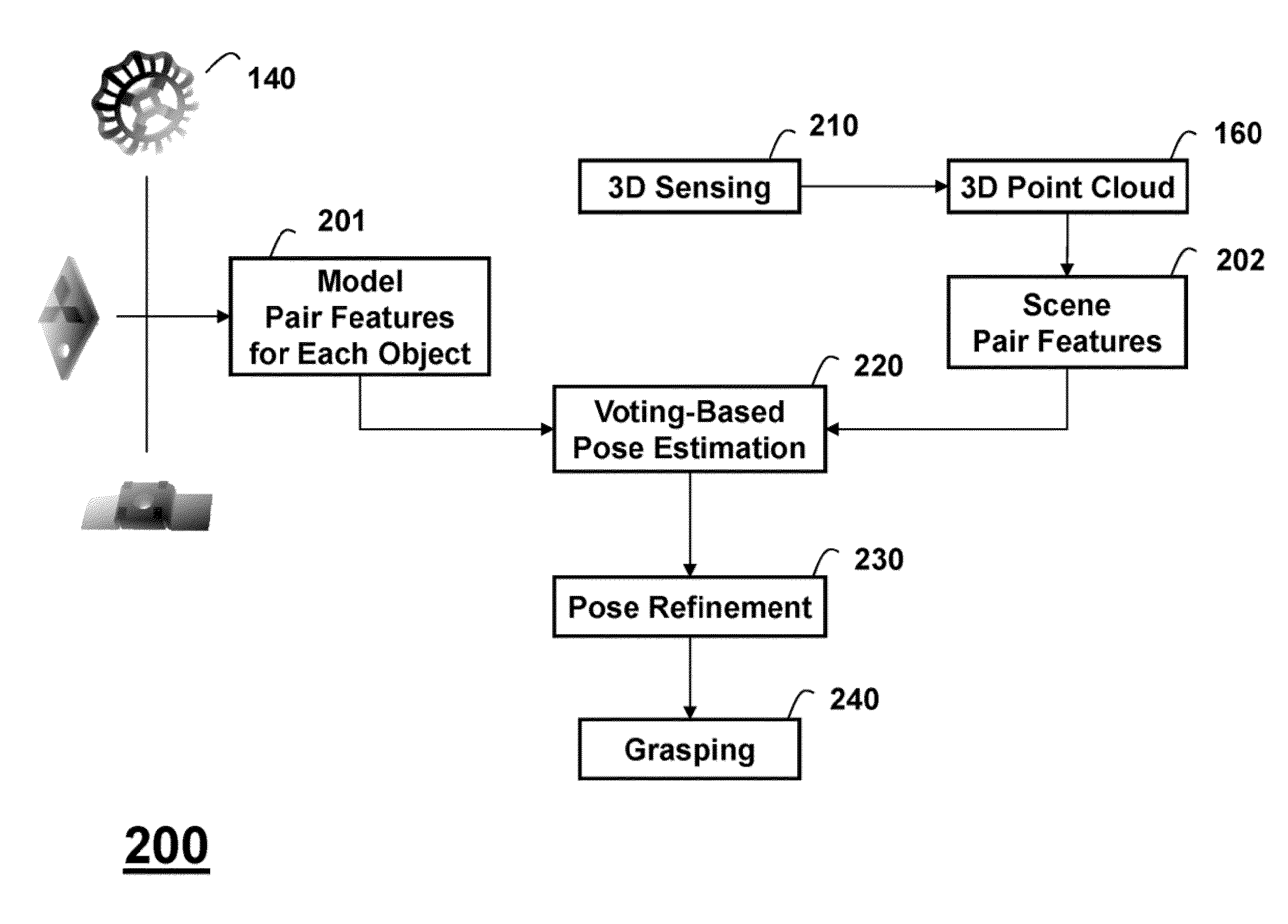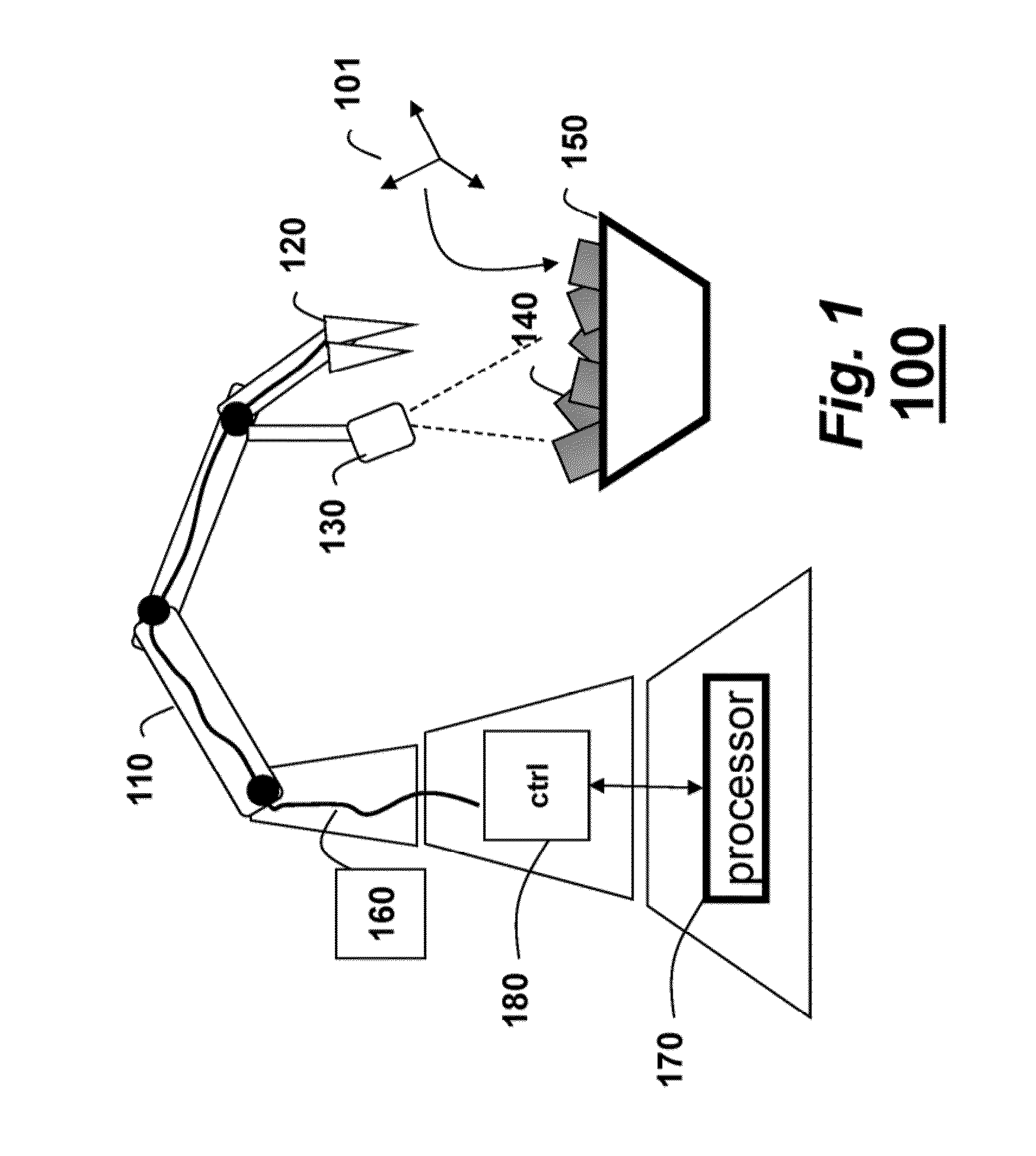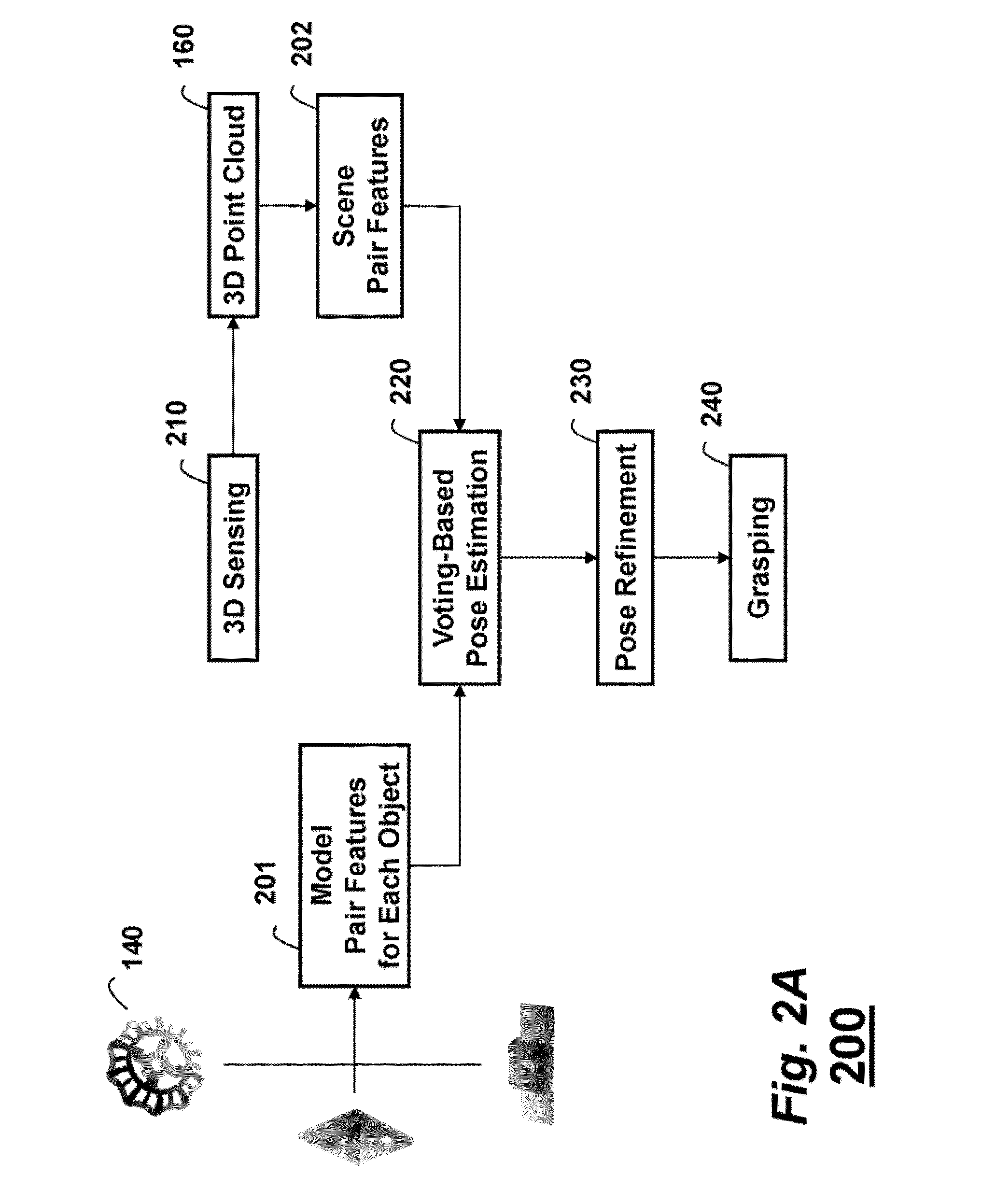Voting-Based Pose Estimation for 3D Sensors
a technology of 3d sensors and data acquisition, applied in image analysis, image enhancement, instruments, etc., can solve the problems of insufficient discrimination and compact surface points of many industrial and real-world objects, and achieve the effect of faster computation and greater accuracy
- Summary
- Abstract
- Description
- Claims
- Application Information
AI Technical Summary
Benefits of technology
Problems solved by technology
Method used
Image
Examples
Embodiment Construction
[0016]FIG. 1 shows a system 100 for estimating a pose of an object. The system includes a 6-axis robotic arm 110 with a gripper 120. A 3D sensor 130 is arranged on the arm. The gripper picks objects 140 up from a bin 150 depending on their pose 101. It should be noted that the bin can contain different objects.
[0017]One example 3D sensor uses structured light generated by an infrared laser. Other sensors are also possible. The sensor acquires 3D “point clouds”160 as depth maps of 640×480 pixels. The 3D sensor is calibrated with respect to the robot arm, thereby allowing grasping and picking of an object using the pose.
[0018]The 3D point clouds are processed by a method performed in a processor 170. The processor can include memory and input / output interfaces as known in the art. The method determines the pose, which can be fed back to a controller 180 to direct the arm to pick the object 140.
[0019]FIG. 2A shows a block diagram of the method 200, which includes the following steps: 3...
PUM
 Login to View More
Login to View More Abstract
Description
Claims
Application Information
 Login to View More
Login to View More - R&D
- Intellectual Property
- Life Sciences
- Materials
- Tech Scout
- Unparalleled Data Quality
- Higher Quality Content
- 60% Fewer Hallucinations
Browse by: Latest US Patents, China's latest patents, Technical Efficacy Thesaurus, Application Domain, Technology Topic, Popular Technical Reports.
© 2025 PatSnap. All rights reserved.Legal|Privacy policy|Modern Slavery Act Transparency Statement|Sitemap|About US| Contact US: help@patsnap.com



